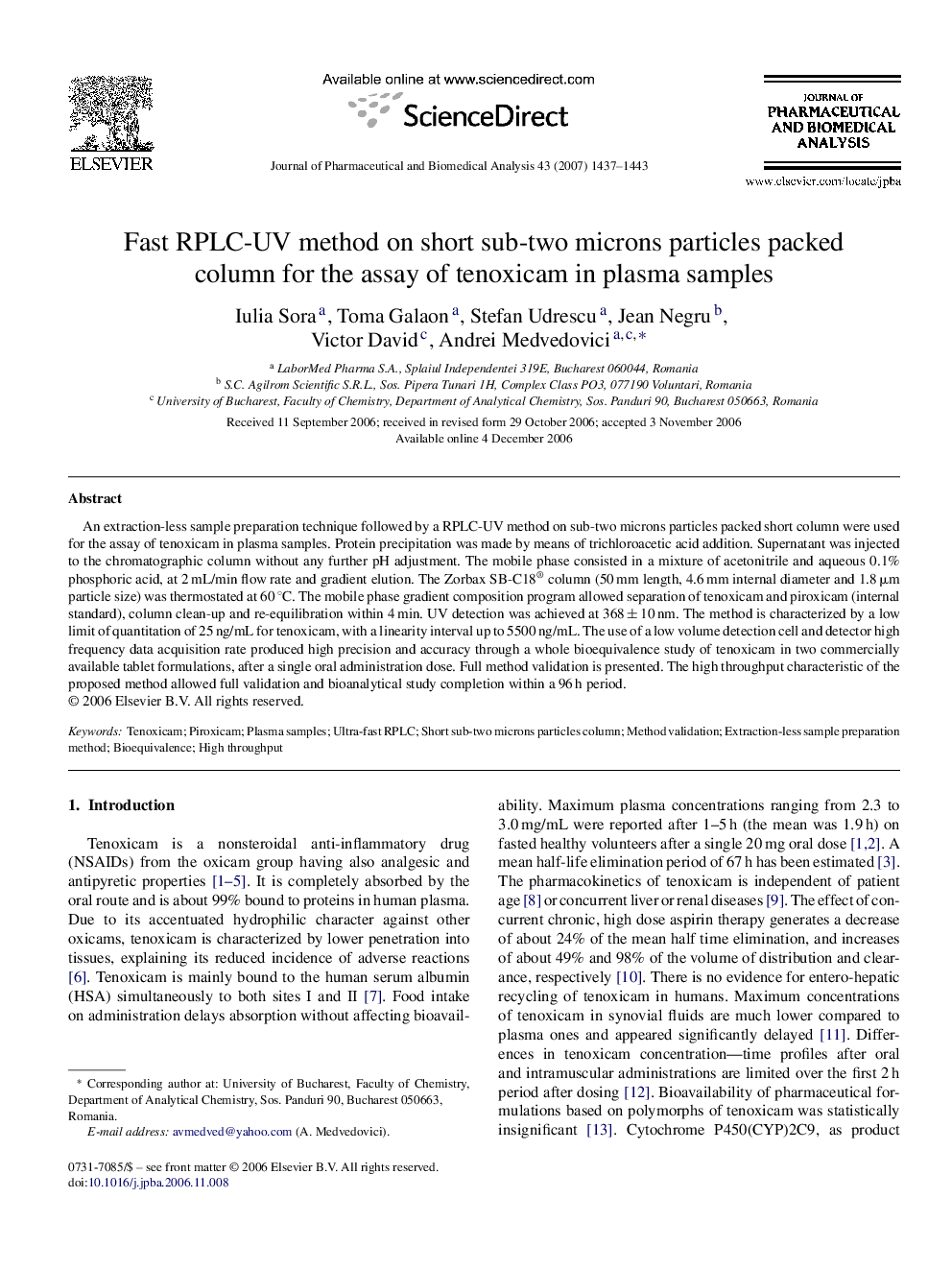| Article ID | Journal | Published Year | Pages | File Type |
|---|---|---|---|---|
| 1223923 | Journal of Pharmaceutical and Biomedical Analysis | 2007 | 7 Pages |
Abstract
An extraction-less sample preparation technique followed by a RPLC-UV method on sub-two microns particles packed short column were used for the assay of tenoxicam in plasma samples. Protein precipitation was made by means of trichloroacetic acid addition. Supernatant was injected to the chromatographic column without any further pH adjustment. The mobile phase consisted in a mixture of acetonitrile and aqueous 0.1% phosphoric acid, at 2 mL/min flow rate and gradient elution. The Zorbax SB-C18® column (50 mm length, 4.6 mm internal diameter and 1.8 μm particle size) was thermostated at 60 °C. The mobile phase gradient composition program allowed separation of tenoxicam and piroxicam (internal standard), column clean-up and re-equilibration within 4 min. UV detection was achieved at 368 ± 10 nm. The method is characterized by a low limit of quantitation of 25 ng/mL for tenoxicam, with a linearity interval up to 5500 ng/mL. The use of a low volume detection cell and detector high frequency data acquisition rate produced high precision and accuracy through a whole bioequivalence study of tenoxicam in two commercially available tablet formulations, after a single oral administration dose. Full method validation is presented. The high throughput characteristic of the proposed method allowed full validation and bioanalytical study completion within a 96 h period.
Related Topics
Physical Sciences and Engineering
Chemistry
Analytical Chemistry
Authors
Iulia Sora, Toma Galaon, Stefan Udrescu, Jean Negru, Victor David, Andrei Medvedovici,
